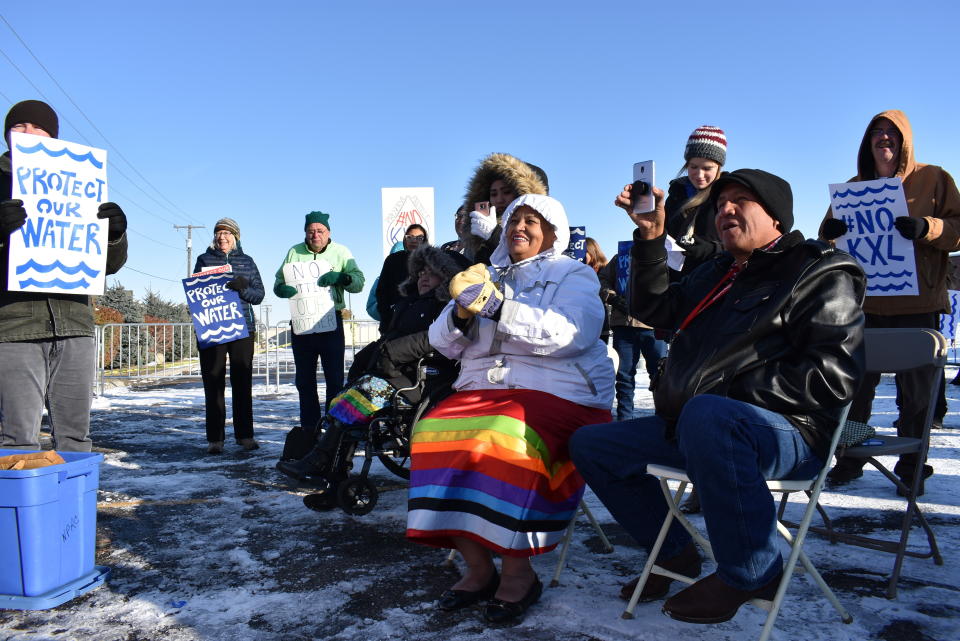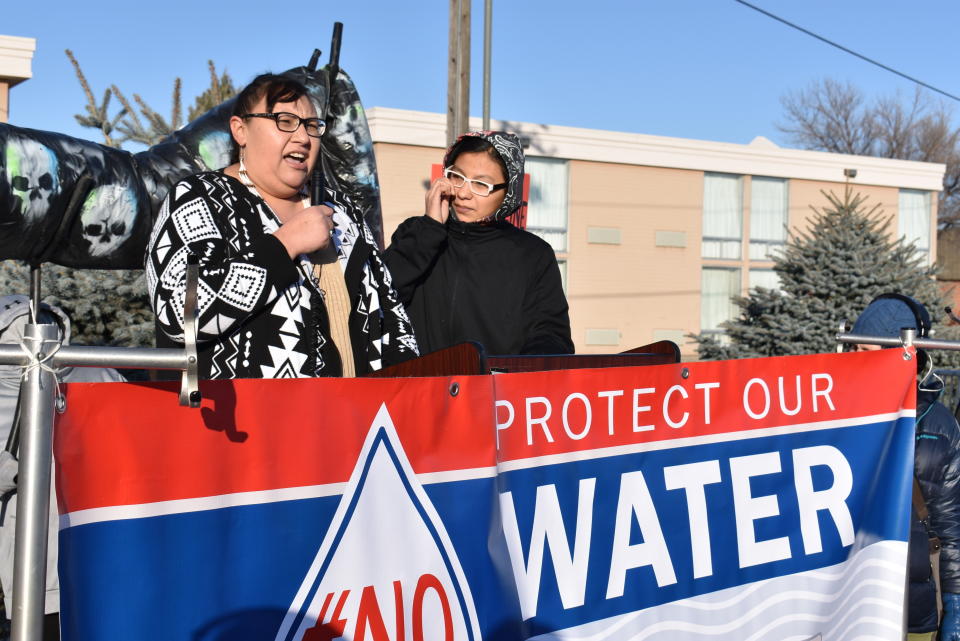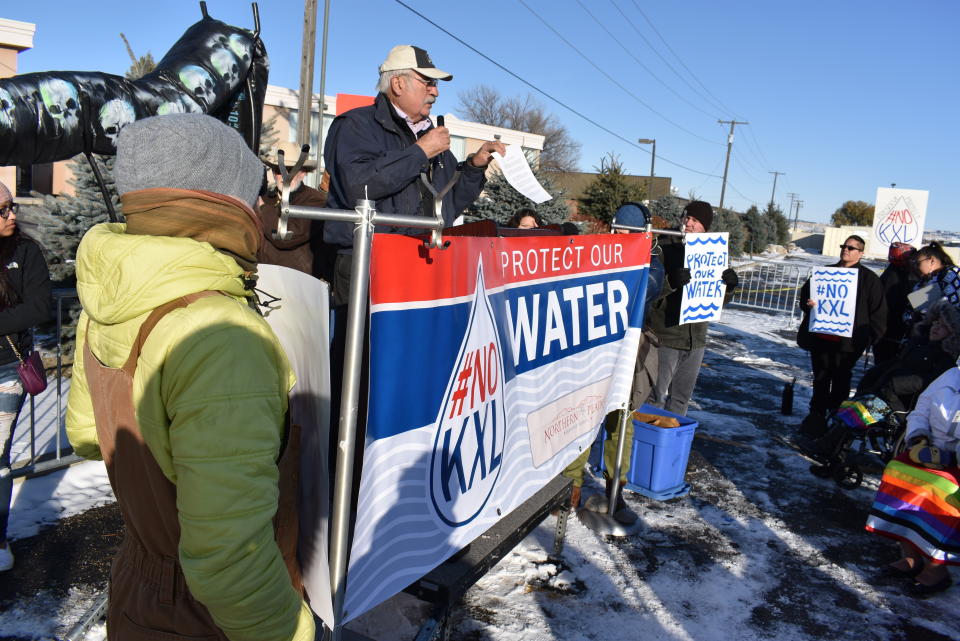BILLINGS, Mont. (AP) — Opponents of the Keystone XL oil pipeline from Canada said the Trump administration is understating the potential for the line to break and spill into water bodies such as Montana's Missouri River, as the U.S. State Department held the sole public meeting Tuesday on a new environmental review of the long-stalled proposal.
Backers say the $8 billion project would create thousands of construction jobs and boost local tax revenues. Sponsor TC Energy insists the line would be safe, despite spills on other lines operated by the company.
A federal judge blocked it last year, saying more environmental study was needed.
President Donald Trump issued a presidential permit for the line in March in a bid to avoid another unfavorable court ruling.
The Republican has been a strong supporter and revived the project after it was rejected under President Barack Obama, in part over worries it would make climate change worse.
Tuesday's meeting, held at a conference center in Billings, was not a public hearing and attendees were invited to use computer terminals to submit formal comments. But the event briefly turned into a shouting match between pipeline backers and opponents, reflecting Keystone XL's emergence as a political lightning rod since it was first proposed in 2008.
Keystone supporter Todd Tibbetts said the line would cross through his farm near Terry, Montana. Tibbett is already getting paid by project sponsor TC Energy for a pipe storage yard the company built on his property.
"Keystone is a wonderful neighbor," he said. "Yes, there's a risk of an oil spill. We have to be willing to take a risk. It's a very minuscule chance."
Montana state Sen. Frank Smith says the 1,200-mile (1930-kilometer) line would break eventually. The Democrat worries that could foul downstream drinking water supplies on the Fort Peck Indian Reservation.
"Obama did a really thorough investigation and decided it wouldn't work," Smith said. "If it gets into (downstream water supplies) how long will it take to flush those lines out?"
Smith and other pipeline opponents criticized the format of the meeting, which included a designated "free speech area," located just outside of the convention center in a snowy parking lot in subfreezing temperatures.
Keystone XL would be a 36-inch (91-centimeter) wide pipeline that would help transport up to 830,000 barrels (35 million gallons) of crude daily from western Canada to terminals on the Gulf Coast.
Burning that oil would release annually between 2.3 million and 196 million tons (2.1 million up to 178 million metric tons) of additional greenhouse gas emissions that contribute to climate change, according to the State Department analysis. That's equivalent at the high end to almost 3% of total U.S. emissions.



